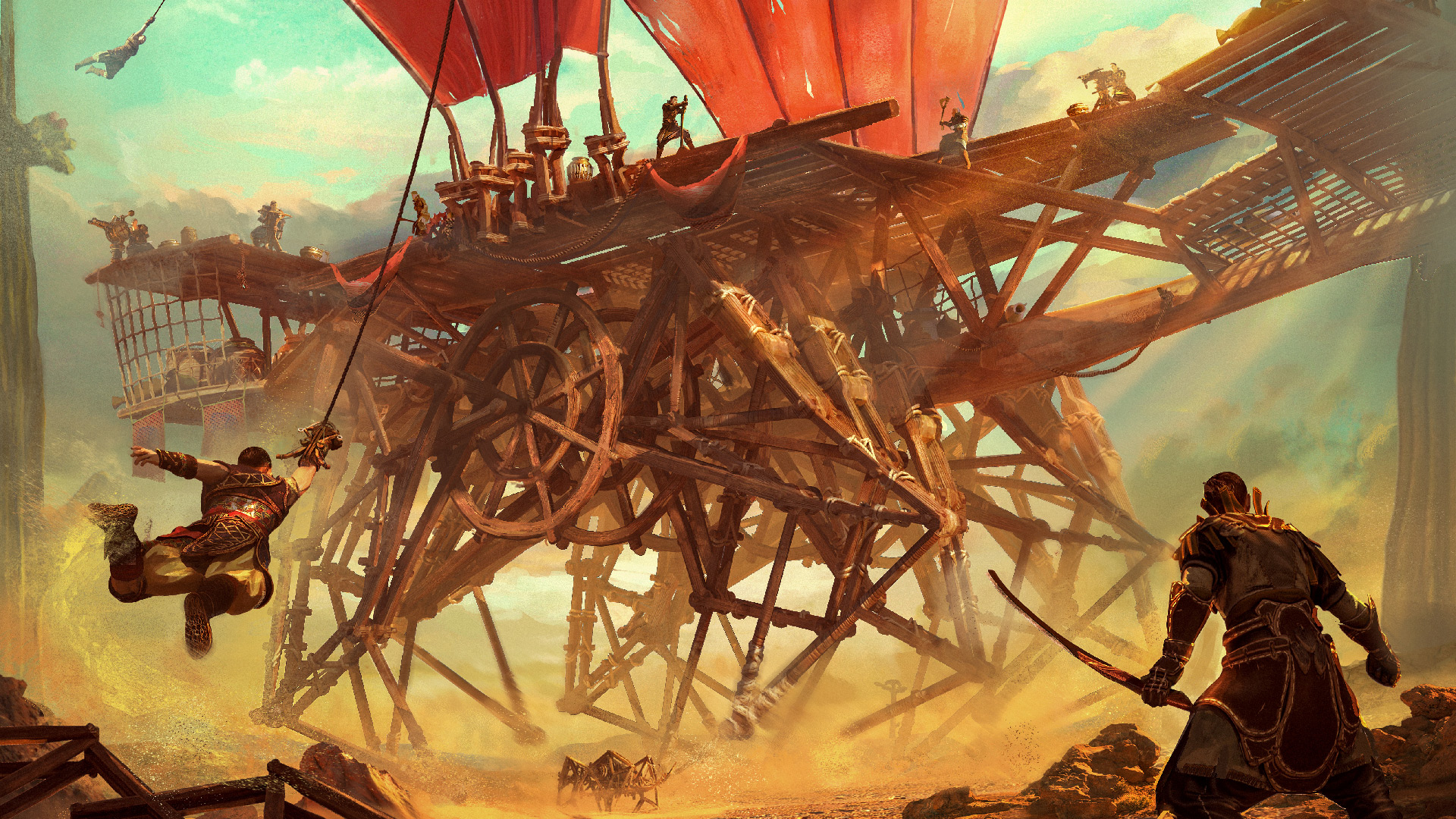What a concept
I’m not looking for a new multiplayer survival game that I’ll become wholeheartedly obsessed with for one solid weekend and then talk myself out of ever playing again. I’ve fallen into that trap enough. I still feel those twinges of guilt. But I can at least entertain the idea, right? Where’s the harm in that?
Last Oasis might look like standard post-Rust survival fare depending on which snippet you come across, but the twist — the singular aspect that got me invested enough to write this article — is another matter. Last Oasis has mechs that are made out of wood and powered by the wind.
Let me say it again: Wooden. Mechs. The intricate walking contraptions can be “adapted for travel, transportation, harvesting, combat, or used as mobile bases,” and just like that, I think I’m in.
The lore of Last Oasis is just as intriguing, though I’m unsure how much of it will be genuinely felt in-game and how much of the world-building will be slightly-less-tangible food for thought.
After a cataclysmic event halted the Earth’s rotation, the planet was split into two extreme and deadly environments. Only a narrow band of space between the hot and cold halves of the planet has conditions that can support life. This band moves at the pace of the planet’s rotation around the Sun, and all life on Earth must migrate with it to survive. In order to keep moving, the remnants of humanity have built nomadic machines, and a walking city called Flotilla.
You’re still out there hoping to live a humble existence, gathering day-to-day resources with which to craft resilient gear and eventually those all-important wooden machines, but larger forces are at play. Most survival games become more or less stationary once players establish their stomping grounds, so I appreciate the nomadic theme here as a way to push back on those hermit-like tendencies.

The game’s Steam summary is peppered with cool-sounding concepts that may or may not play out quite as the developers envision. These were some of the talking points that caught my eye:
- The world consists of many interconnected oases, forming a large open world. Potentially a thousand oases exist simultaneously – the number automatically adjusts to accommodate the size of the playerbase.
- Networks of trade stretch between the known oases. The global player-driven economy is based on real supply and demand.
- No-Man’s Land is the open desert that sits between the last livable oases on Earth. Use it to quickly travel between adjacent oases, provided you bring enough water on your Walker. You can safely log off here – the endless dunes allow you to hide your walker and mobile base if you want to go to sleep or just catch a breath.
- Become a political and economic power. Control a region and get rewarded with a supply of local resources gathered there by roaming Nomads. Grow your clan and make alliances to maximize and protect your income.
- For those who prefer a more high-risk, high-reward lifestyle, piracy is always an option, but beware of payback.
Oh, and there’s ballistas and grappling hooks.
Developer Donkey Crew will kick things off this spring in Steam Early Access and continue production for an estimated 12 to 24 months leading up to the full release of Last Oasis on PC. Along the way, “new weapons, armors, and tools for players will be implemented by expanding the tech tree.” The team hopes to “rely strongly on the input from the community to improve balance and performance. The goal is to achieve an entertaining online world where people create the stories themselves.”
Worth noting: Donkey Crew began as “a small team of passionate gamers working together” on mods for Mount & Blade. Having watched the trailer, that background definitely adds up.
Last Oasis isn’t short on compelling ideas, but whether those ideas pan out in a live game with real human players in the mix remains to be seen. There’s a lot of potential for treachery, that’s for sure.


